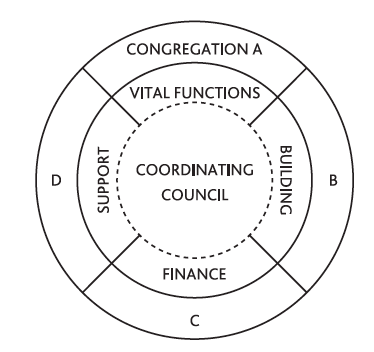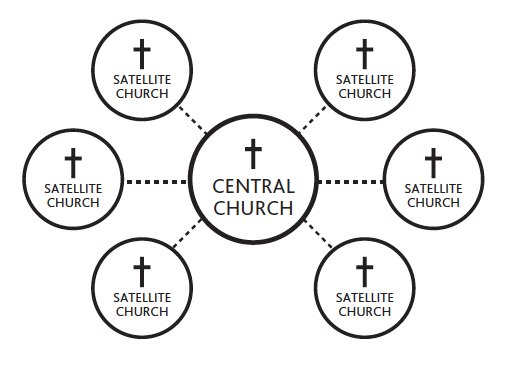Reading: Church Planting Models Part 2
Multi-Congregational Model

An urban church uses the same building at different times for different ethnic groups with their own pastors and autonomous leaders (Anglos, Hispanics, Asians, etc.), where each group contributes economically to maintain the facilities.
Advantages:
a. It makes sense economically.
b. It maximizes the use of the property and facilities.
c. It is attractive evangelistically.
d. It offers options for languages and kinds of worship services.
e. It promotes the breaking down of discrimination and racism.
Disadvantage:
a. The frequent use of the building makes it necessary to have strict scheduling of programs, leaving little margin for activities outside the established ones.
b. If the congregations aren’t prepared for the challenges of diversity, for example, they don’t have good communication skills, don’t value people over things, etc., there can be problems between the different ethnic groups, which is precisely what they need to avoid.
Satellite Model

This model has one single church meeting in several semi-autonomous groups. The satellites have a close relationship with the mother church, although they have a great deal of freedom.
a. It combines the characteristics of large churches and cell groups.
b. It provides opportunities for seminary students to get experience evangelizing and teaching.
c. The reproduction, reach and growth of these churches is wide.
Disadvantages:
a. The use of different properties can mean an increase in expenses, which should be taken into account ahead of time.
b. The roles of the mother church and the satellites may get confused.
c. You should define the roles of both to avoid discrepancies and overlap from the start of initial autonomy to full independence.
Missionary Model

This is the model that’s most familiar to North American Evangelicals. The missionary pastor starts a church plant with the support of the churches centralized in the missionary agency. As soon as the church is formed and is established in terms of its doctrine, leadership & finances, the pastor resigns and leaves a leader in charge.
Advantages:
a. This works well in pioneer situations.
b. The missionary pastor who is sent generally has a good deal of experience.
c. The pastor and his family have solid financial support.
d. The economic support for the church plant allows them to build a sanctuary soon.
Disadvantages:
a. The church plant tends to depend a great deal on the missionary agency’s resources or the churches that send the pastor.
b. The missionary pastor usually has to be absent from the work in order to report back to the sending churches and to raise additional financial support.
c. On some occasions the church becomes dependent on the agency and fails to become responsible for its own finances.
d. It is hard to make a successful transition from an initial missionary pastor to a permanent local pastor.
